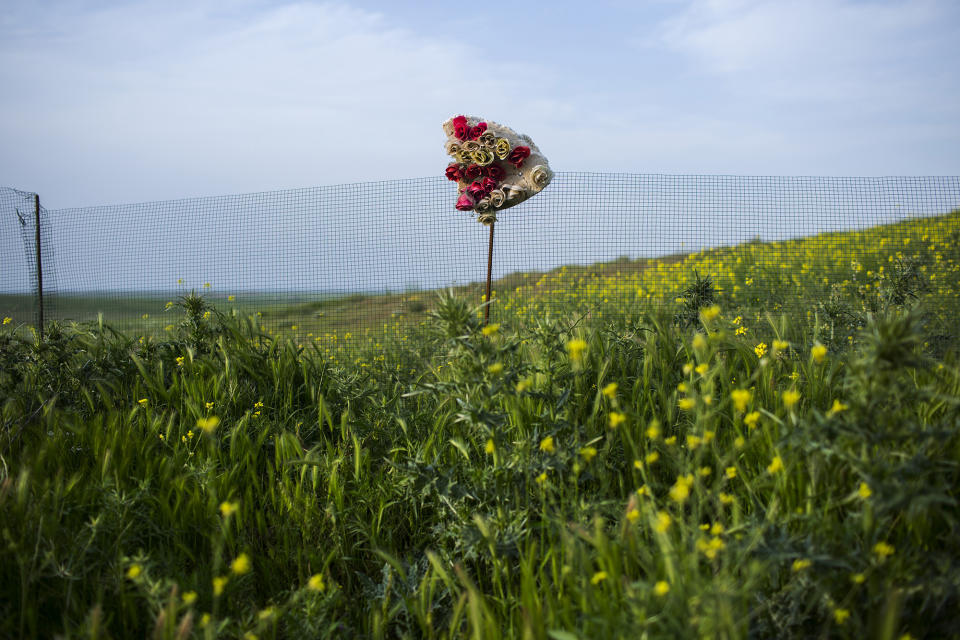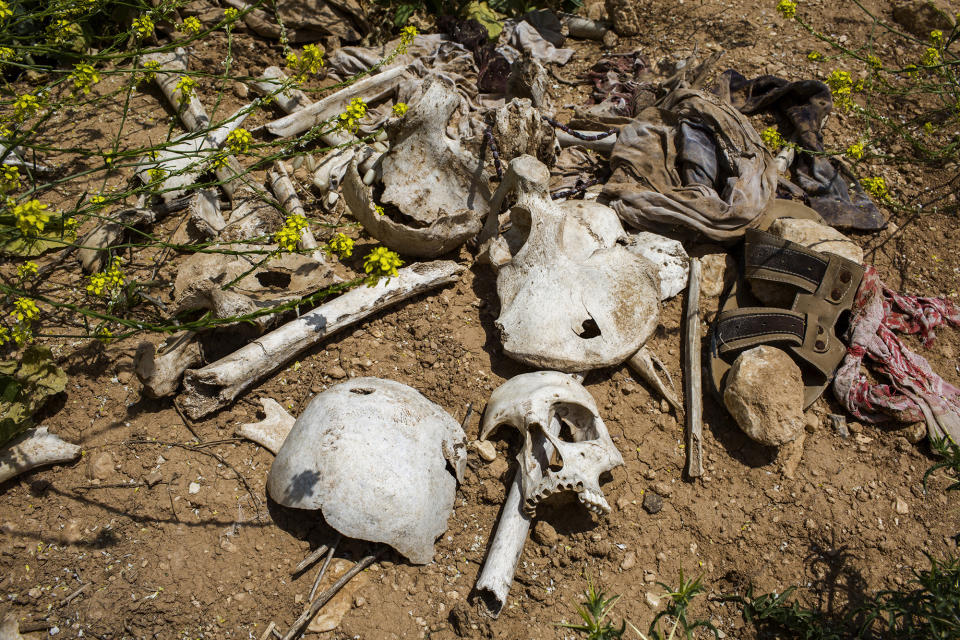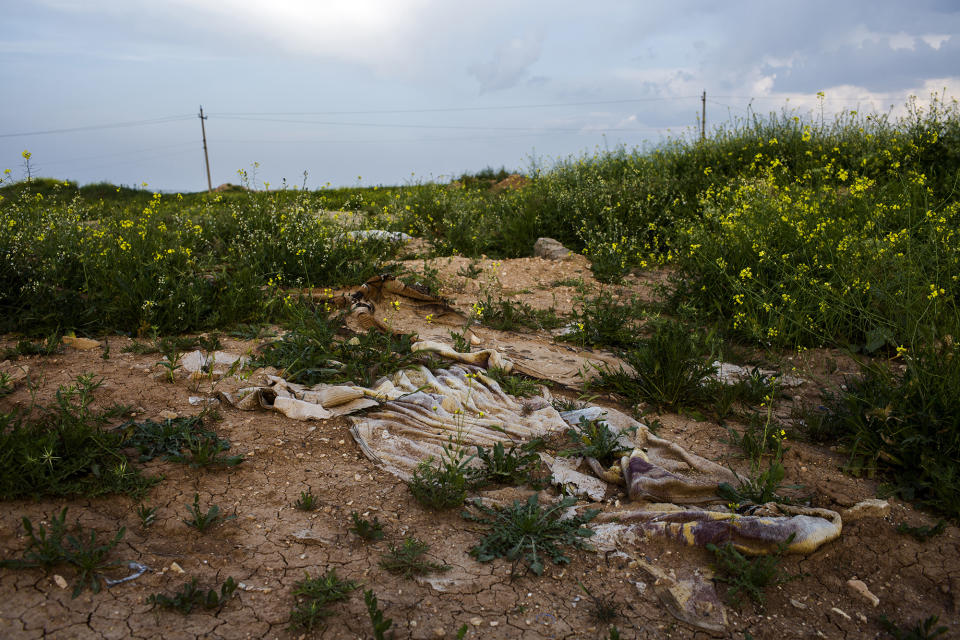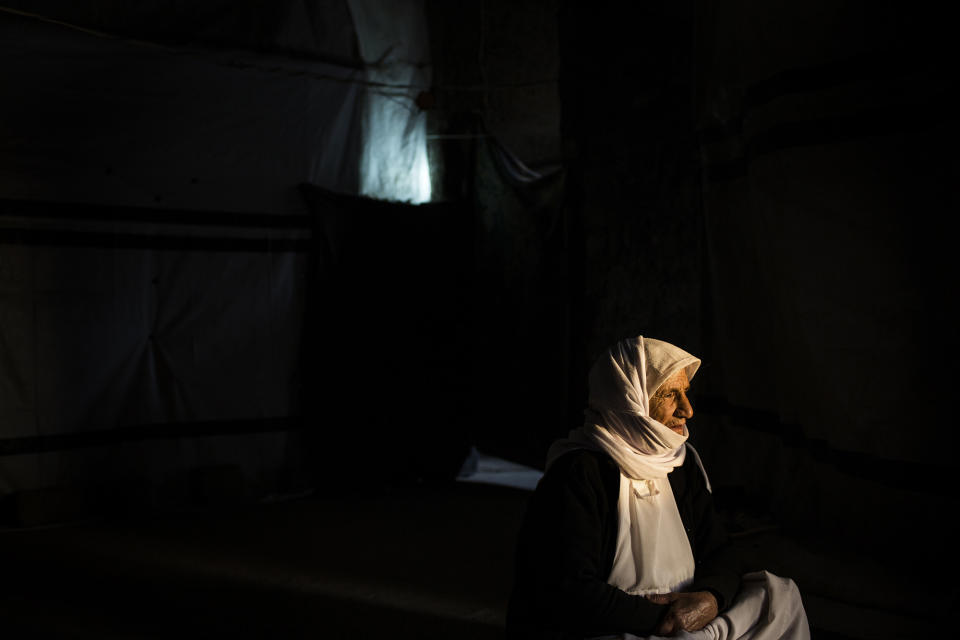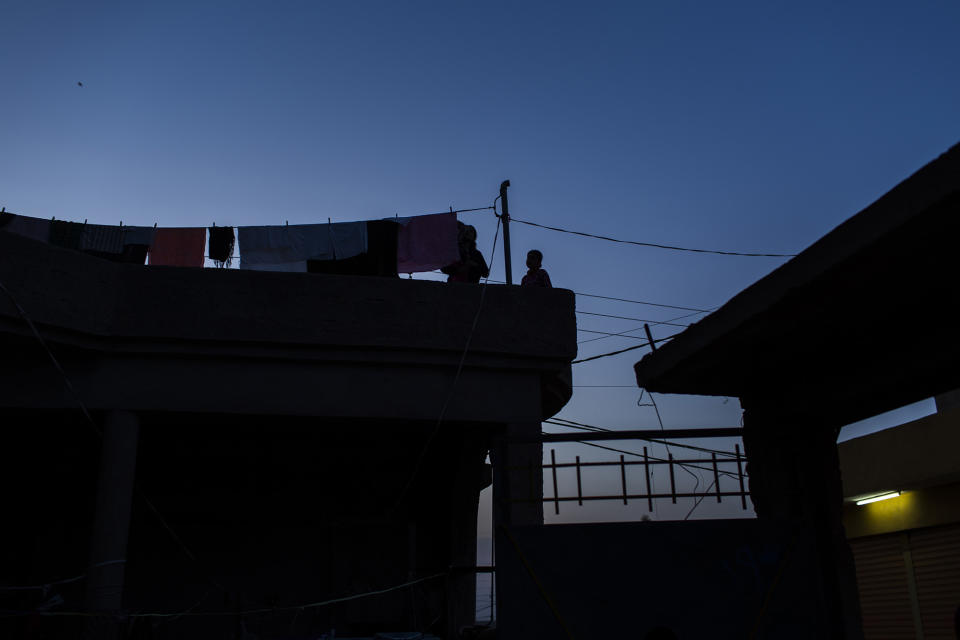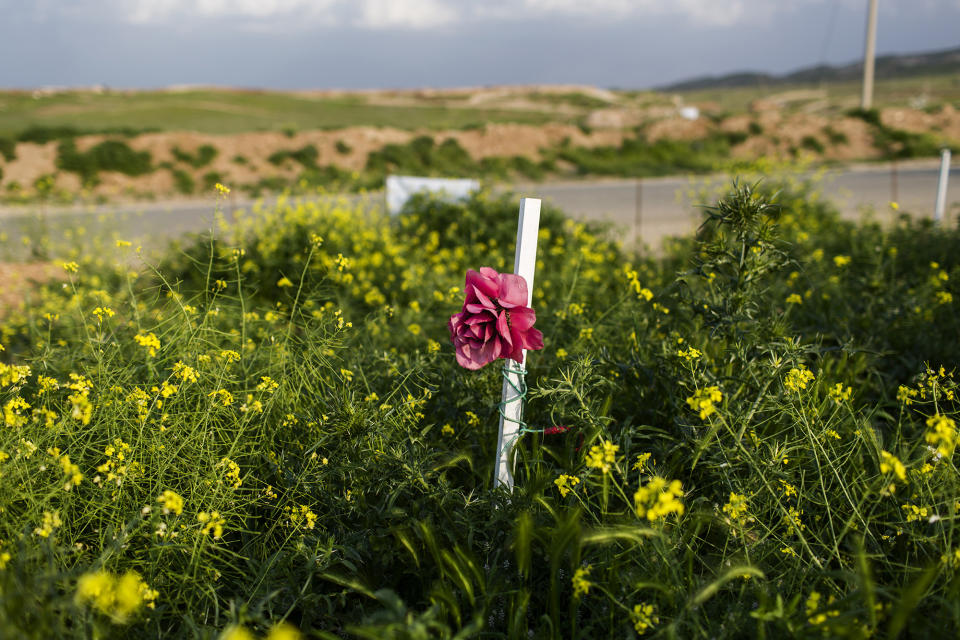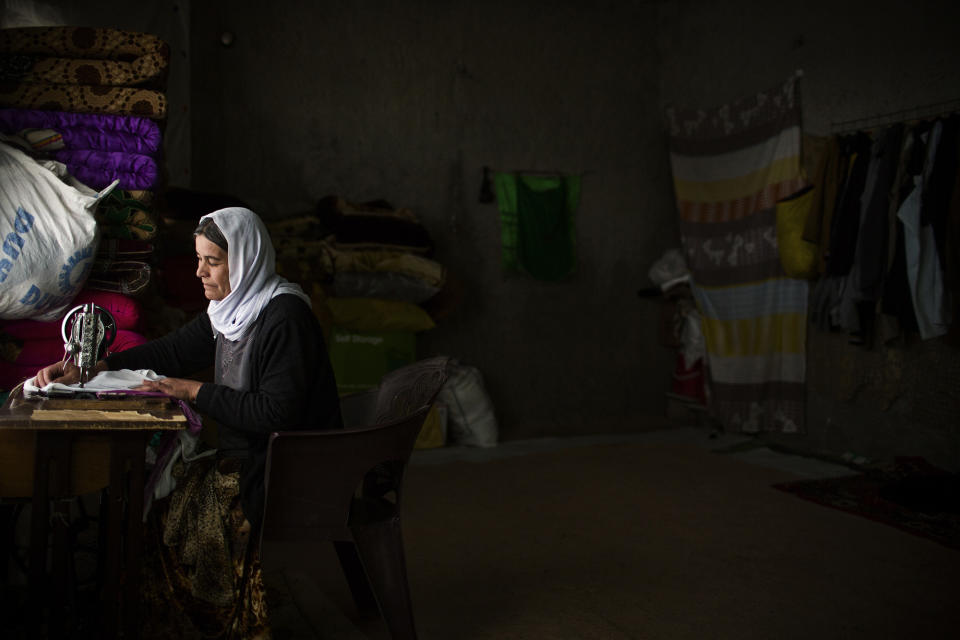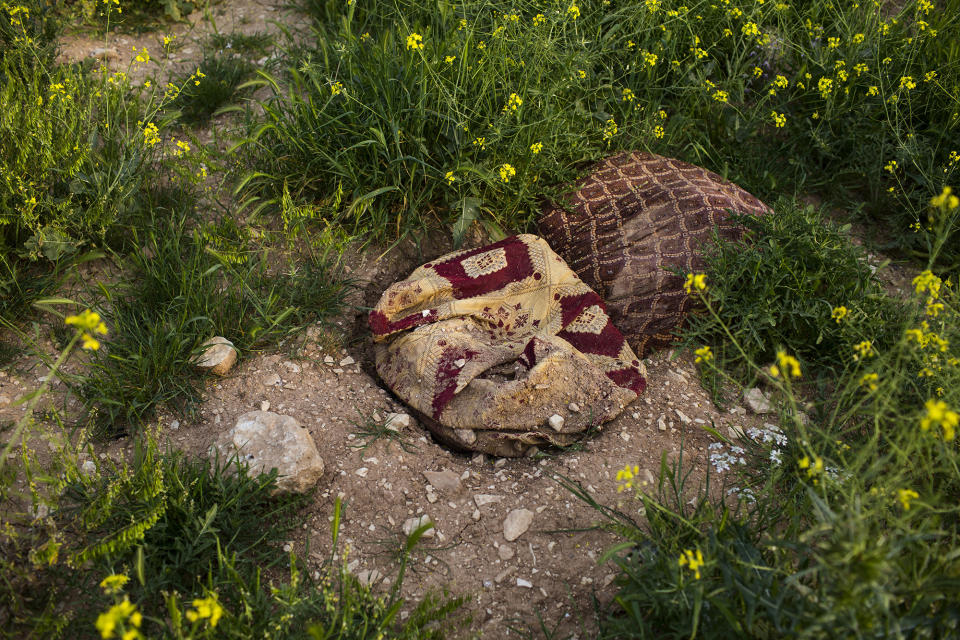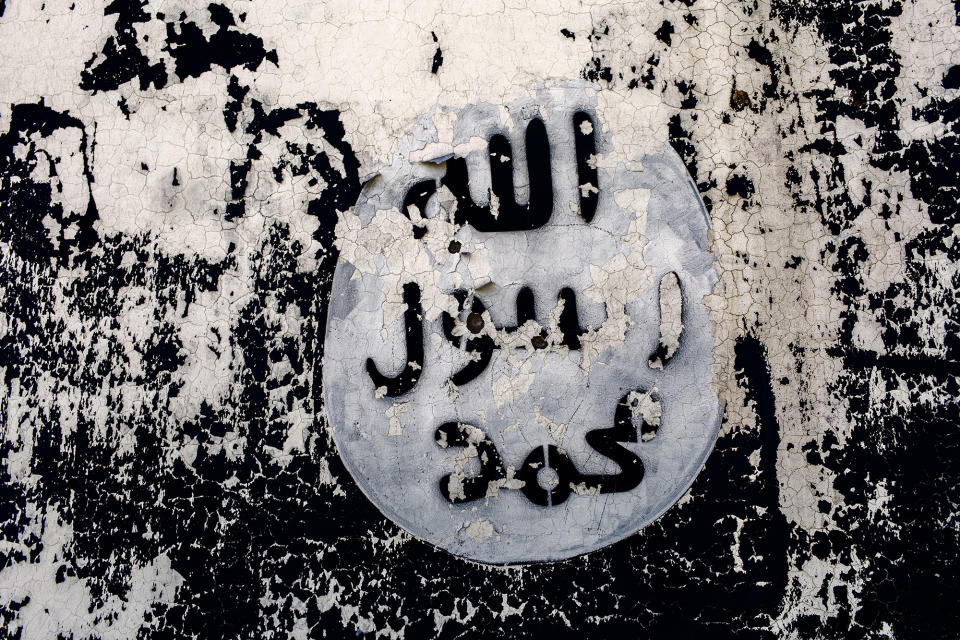Legacy: Death among the flowers – The mass graves in Sinjar
Text and photography by Diego Ibarra Sanchez / MeMo
On the outskirts of Sinjar, Iraq, the early morning rays against the horizon draw a map of desolation through the devastated streets of the city. A river of destruction escorts the punished arteries of a town razed by war. Abandoned and demolished buildings, empty shops, destroyed schools and decomposed corpses lie as witnesses muzzled by the horror.
In August 2014, the Islamic State group attacked Sinjar Valley and its towns in the province of Nineveh in northern Iraq, and once the city was taken, a legacy of death, kidnapping and slavery was left behind. Selectively, members of the Islamic State group ransacked and vandalized the properties of the Yazidi, and planted and hid in their wake hundreds of explosive devices. The streets have turned into an ocean of rubble, and now the only souls roaming around the deserted streets are the peshmerga.
A path of soil, with the margins covered by a robe of poppies and other wildflowers, leads us to five big mounds of earth now surrounded by a metallic fence. A sign in Arabic warns: "Respect the fence. Victims have the right to rest in peace." The silence that permeates this improvised cemetery is interrupted by the buzz of mortars, which reverberates just a kilometer from the front lines of the battle against the Islamic State group.
A row of clothes worn by time serves as a makeshift altar for several skulls and bones. Men's jackets, women's velvet robes, cigarettes and tiny sandals summon the last breaths of hundreds of lives ended in the name of the Islamic State group delirium.
Adil piles up one cigar butt after the other as if he was trying to consume time. He fled to the mountains, and from "the distance," he witnessed the massacre: "I was on a nearby hill, and I saw with the binoculars four trucks arriving, full of people. There were more than 300 persons. They made them come down from the trucks and forced them to kneel down to execute them later on. When all the corpses lied on the ground, they fired the coup de grace in their heads." Like many Yazidi, he fled to the mountains with his family.
A few kilometers away in the intersection of Hardan, north of Sinjar, the dust of the road serves as a voiceless witness to the hundreds of murdered Yazidi. The landscape draws with blood an open wound in the memory: Six mass graves rise as silent witnesses of other summary executions. In one of the graves lie the remains of more than 65 people who were massacred when they were blocked on the road, completely collapsed by the number of vehicles full of people trying to flee Sinjar.
Rashu looks up to the sky but does not find an answer. Like Adil, he witnessed the horror. His thoughts get lost in the presence of a wreath decorating a fence. A vast green mantle that covers the earth provides a breathing space for hundreds of Yazidi who were massacred. Spread blankets on the ground, makeshift mausoleums, lonely flowers ⦠their crime: not believing in the same God; their punishment: extermination. "Many of us ran to the mountains. The elderly, poor families and those without a car to leave were left behind. One day, they called them from the speakers and gathered them here; then they were exterminated," recounts Rashu.
The Yazidi have been persecuted for their beliefs throughout history. They are considered infidels by Muslims because they do not belong to any of the three monotheistic religions, although they have things in common. "They call them devil worshippers because the sun is their god, and according to the Sharia law, they deserve to die," says Ali Khatab, coordinator of the international group The Voice of Yazidi, which is documenting the massacres. "These summary executions could rise to the level of genocide when all the dead and missing are accounted for," he says. Once the city was liberated by Kurdish forces, supported by U.S. bombings in November 2015, as many as 35 mass graves were discovered in this region, but only 23 of them have been identified in the liberated areas of northern Sinjar. The rest are located farther south, in localities still in the hands of the Islamic State group. Those who survived sought refuge in the mountains, while the helplessness of not knowing where their family and friends are deepens the pain in their memoirs.
Hundreds of people are still missing, and many women and girls remain captive as sex slaves under the claws of the Islamic State group. Sixteen-year-old Busra was one of them, but she managed to courageously escape. Her nightmare began on Aug. 13, 2014, when Kocho, her hometown near Sinjar, was taken under the iron fist of the Islamic State group. Like many Yazidi, she tried to escape with her family, but they were caught at an Islamic State group checkpoint in Rambus Gharbi. "Right there, we were forced to convert to Islam if we wanted to save our lives. Then they separated the men from women and children. They took me, my mother and my five younger siblings to Baaj. From my father, I know nothing since that day. They captured him and took him away," explains Busra, pausing and taking a breath as her body shudders. Having been sexually abused and forced to convert to Islam and be a domestic slave, the teenager has learned to fight her trauma with the support of the nonprofit Yazda, but still she feels the pain whenever she recalls that ordeal.
The hands of time have been frozen ever since Sept. 11, 2015, a day that is forever etched in her memory. At 5 p.m., along with a male companion, she managed to escape her captors, and after two days stranded in the mountains, they were found by a peshmerga group. Now she is living in a refugee camp in Khanki with the family of her friend's uncle and his mother, who was captive in Raqqa but was released two months ago by the Islamic State group in an exchange of prisoners. "Although the exact number is unknown, about 25,000 women, mainly Yazidi, are estimated to be captured by the Islamic State and have been sold as sex slaves," explains Heather Barahmand, coordinator of the Yazda center in Dohuk, Iraq.
The Islamic State group's legacy of terror extends beyond Yazidi memory, sculpted in blood. Throughout their history, they have been persecuted and turned into pariahs by bloody dictators. Most Iraqi Yazidi still continue to live in displaced camps and unfinished or abandoned buildings in the Kurdistan region.
The echoes of war evoke the bitter taste of genocide. There are still many areas to free, and the fear of finding relatives executed in cold blood and stacked in pits grows as time goes by. For the first time since the 2004 massacres in Darfur in Western Sudan shook the world, the U.S. has declared that these atrocities committed by the Islamic State group constitute genocide.
_______
See more news-related photo galleries and follow us on Yahoo News Photo Tumblr!
